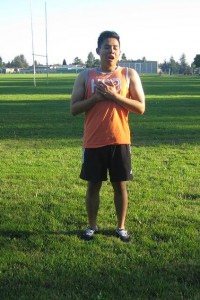A pulled chest muscle is caused by excessive stretching and tearing of muscle fibers that leads to chest pain, bruising and inflammation when it becomes severe. Pectoralis major and pectoralis minor are two muscles found in the pectoral girdle.
Straining these muscles will result to chest pain and difficulties in performing regular activities such as lifting, pulling, bending and sitting or lying down. When the muscles become overstretched beyond its limits, it can cause small tearing of the muscle fibers. A pulled chest muscle can also occur among athletes due to quick movements. Fast upper movement of the body common in weight lifters, boxers, tennis players and other athletes increases the risk for a pulled chest muscle.
Symptoms are classified into 3 grades

Grade 1
- Mild discomfort
- Mild edema
- Mild loss of strength
- Limitation of movement
Grade 2
- It involves moderate injury that affects many muscles fibers and partial tear of the muscle
- Chest pain and mild bruising
- Obvious defect of the muscle
- Loss of strength
- Pain when moving the arm and shoulder
- Tenderness and inflammation of the affected area
Grade 3
- It causes complete tearing of the muscle and loss of muscle function
- Severe pain in the chest
- Loss of strength
- Hematoma
- Inflammation of the chest wall
- Incapable of moving the arms and shoulders
Treatment
- Avoid performing activities that uses the pulled chest muscle. Minimize the use of the affected area that can strain the pulled muscles such as lifting and pushing heavy objects.
- Rest in bed for at least 2-3 days and minimize any physical activity.
- Apply an ice pack on the affected area. The ice pack lessens the swelling and discomfort. Wrap the ice pack in a towel before placing on the affected area to prevent frostbite.
- Apply a warm compress on the area for 15-20 minutes to lessen pain and soreness of the affected area.
- Take the prescribed over-the-counter pain medication and a muscle relaxant to lessen the pain from a pulled chest muscle. These medications are taken if needed and stop when pain disappears.
- Begin light exercises such as stretching the muscle every day if it does cause pain on the pulled chest muscle.
- If pain does not get better or even gets worse, seek medical help. It can be an indication of some underlying conditions that requires immediate treatment to prevent further damage to the pulled muscles.
- Massage the chest at least 3 times every day to lessen the pain caused by a pulled chest muscle and wrap the chest using a bandage to prevent unnecessary movement and for fast healing of the condition.
- Seek the help of the physical therapist for some rehabilitation exercises such as stretching and strength training exercises for the recovery period.
More Information
The details posted on this page on a pulled chest muscle is for learning purposes only. To learn to recognize and manage strains and sprains including a pulled chest muscle, enroll in a first aid course with one of our training providers.
